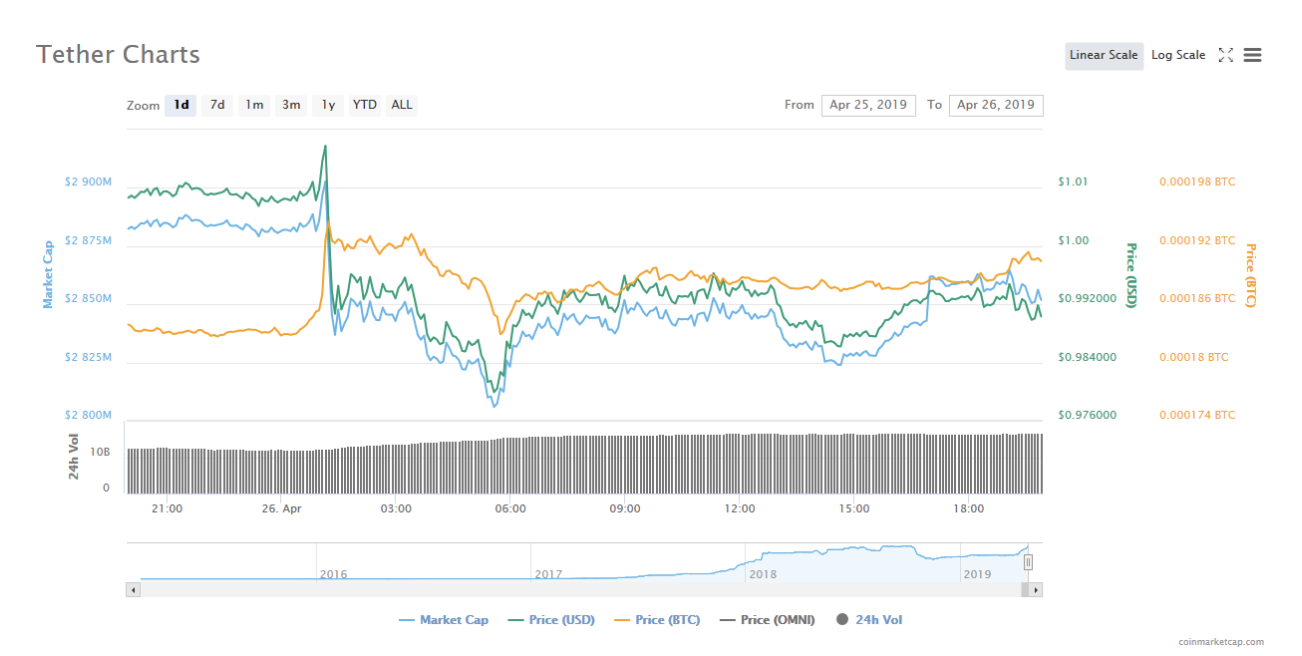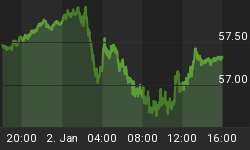Nowadays, it doesn’t take much to spook cryptocurrencies markets. After a few weeks of relative calm, the markets are on the move again, shedding $10 billion in the space of one hour on Thursday’s session after New York Attorney General, Letitia James, accused bitcoin exchange Bitfinex and Tether Ltd of rigging the market in a bid to hide an $850-million loss.
According to New York’s top lawyer, Bitfinex illegally dipped into Tether’s cash reserves, using up $700 million of the funds to cover up the loss of commingled client and corporate funds totaling $850 million.
Bitfinex is the creator of Tether, the best-known stablecoin.
Bitcoin was down 4 percent, with ethereum and XRP also slipping significantly.

(Click to enlarge)
Source: CoinMarketCap
Interestingly, Tether was also caught up in the selloff, coming off its dollar peg.

(Click to enlarge)
Source: CoinMarketCap
Corporate slush fund
The AG says Bitfinex and Tether Ltd had crossed the line and contravened New York law by using Tether’s cash reserves as Bitfinex’s corporate slush fund:
“New York state has led the way in requiring virtual currency businesses to operate according to the law. And we will continue to stand-up for investors and seek justice on their behalf when misled or cheated by any of these companies.”
The AG’s bone of contention is that Tether has fashioned itself as a stablecoin whose value is pegged to the U.S. dollar.
Bitfinex created Tether in 2015 and says it holds a dollar for every Tether it issues similar to the way the Fed backstops dollars with physical gold. At the time of going to press, Tether had a market cap of $2.85 billion, which is ostensibly the dollar amount that Tether Ltd should be holding in its fiat reserves.
The whole idea was to create a cryptocurrency that did not exhibit the stomach-churning volatility of mainstream cryptocurrencies but instead maintained the relative stability of the dollar but with the superior operational ability of cryptocurrencies.
The million dollar question, however, has always been whether Tether Ltd actually holds enough dollars to justify the dollar peg. But even worse, there has been pretty damning allegations in the past of Tether being used to artificially manipulate crypto prices, and was even blamed for the spectacular crypto market crash of 2018.
In this paper titled 'Is Bitcoin Really Un-Tethered?' a University of Texas professor has published how he tracked crypto transactions during the mad rally of late 2017 and discovered distinctive patterns that seemed to revolve around the strategic use of Tether.
He says Tether was also used to manipulate other cryptos: ‘‘Using algorithms to analyze the blockchain data, we find that purchases with Tether are timed following market downturns and result in sizable increases in Bitcoin prices. Less than 1% of hours with such heavy Tether transactions are associated with 50% of the meteoric rise in Bitcoin and 64% of other top cryptocurrencies.’’
And:
‘‘The flow clusters below round prices, induces asymmetric autocorrelations in Bitcoin, and suggests incomplete Tether backing before month-ends. These patterns cannot be explained by investor demand proxies but are most consistent with the supply-based hypothesis where Tether is used to provide price support and manipulate cryptocurrency prices.’’
Another independent research firm, Chainalysis, backed up the professor’s claims terming them 'credible.'
Reality check
It’s quite possible that it’s those earlier reports that rang the AG’s tocsin and led to the current findings. In its response, Bitfinex says the AG’s court filings were written in bad faith and has flatly denied losing the $850 million.
But the fact that the exchange has come under regulatory scrutiny over corporate malfeasance that directly affects the credibility of Tether should provide a reality check for the so-called family of stablecoins.
By Alex Kimani for SafeHaven.com

















